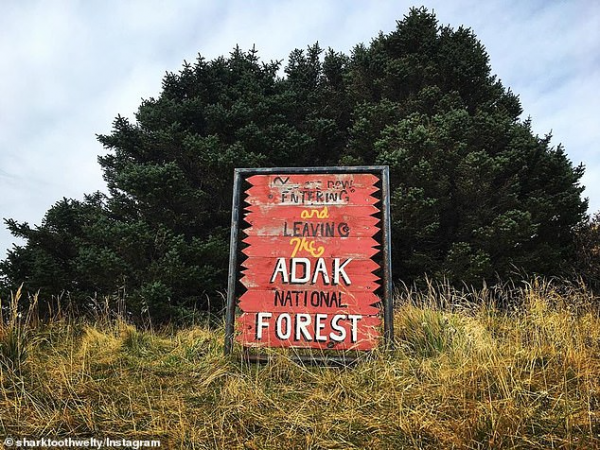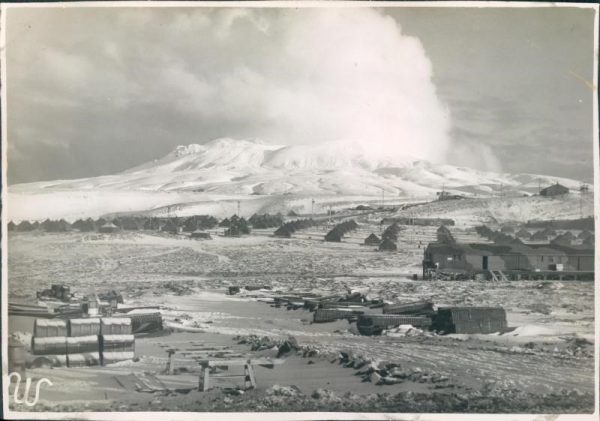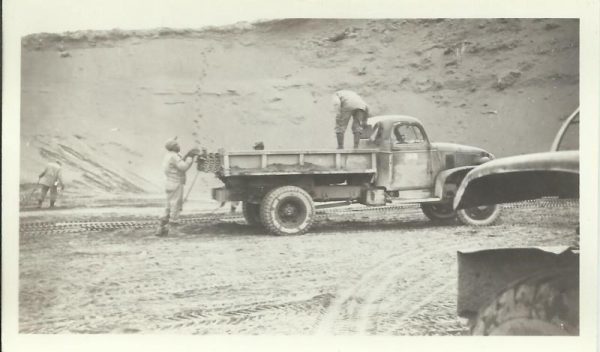Adak Island: The Handful of Trees That Make Up The Smallest US ‘National Forest’
Adak Island is one of the Aleutian Islands, sitting where the Pacific Ocean and the Bering Sea meet. Remote and isolated, the island still contains a currently unused naval air station that dates from the Cold War and one other truly unusual feature – the smallest ‘National Forest’.
Adak National Forest is composed of a total of 33 trees, so closely packed together that from a distance they look more like a clump of bushes. It’s located at the foot of a small hill on the otherwise treeless and windswept Alaskan Island.

The forest’s existence is a direct result of man’s interference during World War II. During that period, Brigadier General Bolivar Buckner, junior was stationed at the air base on the island. At that point the base there had about 6,000 serviceman stationed there.
The troops there were guarding Alaska against incursions by the Japanese military, which had invaded the Aleutian Islands and gained control over two other islands in the Chain, Kiska and Attu, and attacked Dutch Harbor. Adak’s air base was a key player in the campaign that occurred in the island chain.
Despite the importance of the roles they played, the airmen and –women who were stationed there were far from home and at the mercy of often unforgiving weather.

Frigid temperatures, wind, fog, mud, and rain were par for the course on the island, and were having a negative impact on the soldiers stationed there.
The planting program was the brainchild of Brigadier General Bolivar Buckner, junior, who wanted to boost the morale of the forces under his command.
The General had the first trees planted around Christmas in 1943, thinking that the pines would be particularly effective in their task during the Christmas season. The tree-planting program continued until 1945.

There’s a reason the island was formerly so barren, however. The wind and weather wreaked havoc on the trees and many of them died. By the 1960s only one tree remained on the island, prompting some soldiers to put up a sign reading ‘You are entering and leaving Adak National Forest.’
The sign was placed as an ironic joke, but it remains in place more than fifty years later. In the intervening years since the sign was put up the number of trees has increased, although it’s unknown whether they reproduced naturally or if more of the pines were planted.
The trees are pretty short, stunted by the fierce winds that blow around island, but they continue to thrive even in those conditions. In keeping with the spirit in which they were planted, the locals decorate the tiny grove with lights every year for Christmas.

After World War II ended, the base on Adak Island kept running, operation as a reconnaissance station for the purpose of keeping track of Soviet submarines. In 1997, and after the Soviet Union collapsed, the US government decided the base was no longer necessary, so it was decommissioned and has been abandoned ever since.
Today, the island still holds the empty dwellings and bunkers that made up the air base, as well as various bits of rusted artillery.
Many of the structures are dilapidated, having suffered from the ravages of weather and the local population of predators. The island remains home to a little over 100 people and contains a couple of restaurants, a school, and a general store.
Most of the residents work at local business, or for the government or the fishing industry, catching and processing halibut.
Forty-One Thousand Year Old Tree Tells Of Earth’s Magnetic Reversal
Even though the island is mostly barren and life there isn’t easy, it still also draws a few tourists who are interested in wandering the abandoned base or dropping by to see the country’s ‘smallest national forest’ while they’re there.





